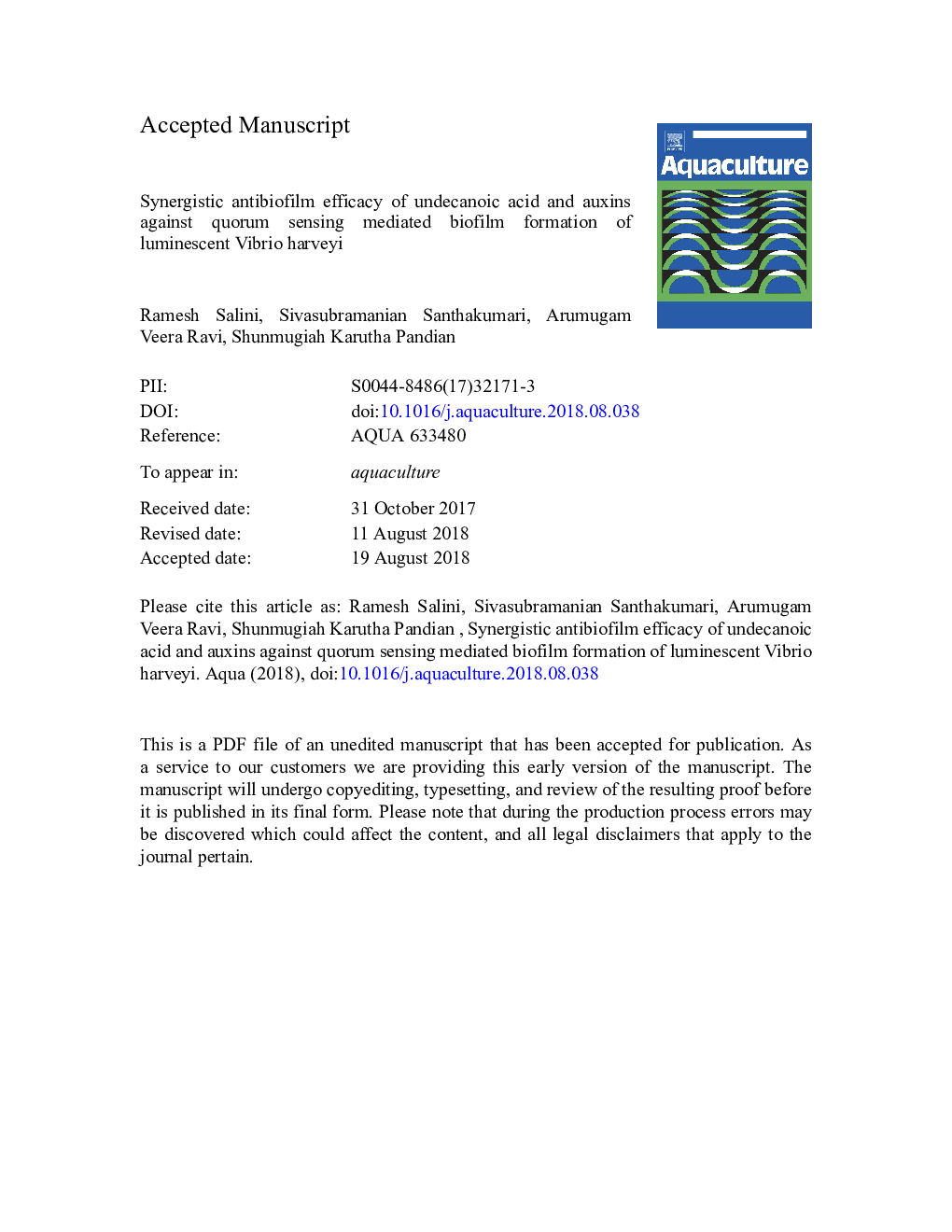| Article ID | Journal | Published Year | Pages | File Type |
|---|---|---|---|---|
| 10137287 | Aquaculture | 2019 | 45 Pages |
Abstract
Vibrio harveyi are Gram-negative marine luminescent bacteria and most of them are multi-drug resistant pathogens. The incidence of biofilm mediated antibiotic resistance stresses the quest for novel therapeutics to treat luminescent vibriosis in aquaculture. This study intended to explore the combinatorial effect of undecanoic acid (UDA) along with auxins ((Indole-3-Acetic Acid (IAA) and Indole-3-Butyric Acid (IBA)) against V. harveyi biofilm formation under in vitro and in vivo conditions. The minimal inhibitory concentration (MIC) of UDA against planktonic V. harveyi was found to be 20â¯Î¼g/ml and for auxins it was 200â¯Î¼g/ml. Furthermore, the synergism of both combinations was calculated through fractional inhibitory concentration (FIC). The FIC of UDA with auxins to inhibit biofilm formation was identified as 10â¯Î¼g/ml for UDA along with 30â¯Î¼g/ml of either IAA or IBA. Light and confocal laser scanning microscopic (CLSM) analyses further confirmed that these combinations effectively prevented the initial attachment, microcolonies and also dispersed the mature biofilm formation of V. harveyi. Similar results were obtained for bioluminescence, caseinase and swarming motility of V. harveyi, where UDA with IAA or IBA combinations reduced the bioluminescence by upto 93.6% and 76.7%, respectively. Besides, in support of in vitro results, the real-time PCR analysis of quorum sensing (QS) genes revealed the master regulators luxO, luxQ, luxR and luxS to be down-regulated upon treatment with these combinations in V. harveyi. Further in vivo studies using brine shrimp larvae also manifested the enhanced survival rate and reduced adherence of test pathogen upon treatment with these compounds.
Related Topics
Life Sciences
Agricultural and Biological Sciences
Aquatic Science
Authors
Ramesh Salini, Sivasubramanian Santhakumari, Arumugam Veera Ravi, Shunmugiah Karutha Pandian,
